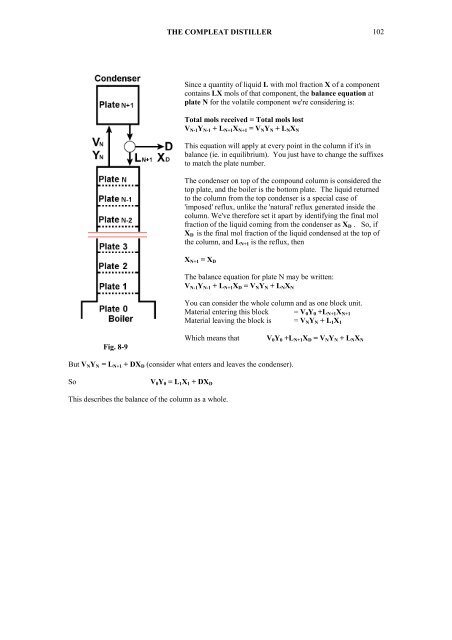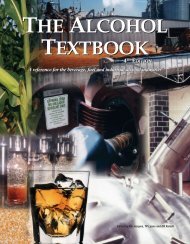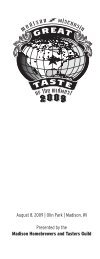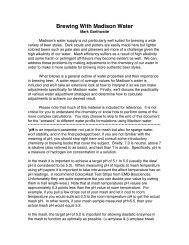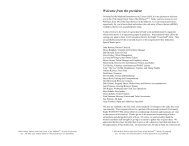The Compleat Distiller
The Compleat Distiller
The Compleat Distiller
Create successful ePaper yourself
Turn your PDF publications into a flip-book with our unique Google optimized e-Paper software.
THE COMPLEAT DISTILLER 102<br />
Since a quantity of liquid L with mol fraction X of a component<br />
contains LX mols of that component, the balance equation at<br />
plate N for the volatile component we're considering is:<br />
Total mols received = Total mols lost<br />
V N-1 Y N-1 + L N+1 X N+1 = V N Y N + L N X N<br />
This equation will apply at every point in the column if it's in<br />
balance (ie. in equilibrium). You just have to change the suffixes<br />
to match the plate number.<br />
<strong>The</strong> condenser on top of the compound column is considered the<br />
top plate, and the boiler is the bottom plate. <strong>The</strong> liquid returned<br />
to the column from the top condenser is a special case of<br />
'imposed' reflux, unlike the 'natural' reflux generated inside the<br />
column. We've therefore set it apart by identifying the final mol<br />
fraction of the liquid coming from the condenser as X D . So, if<br />
X D is the final mol fraction of the liquid condensed at the top of<br />
the column, and L N+1 is the reflux, then<br />
X N+1 = X D<br />
<strong>The</strong> balance equation for plate N may be written:<br />
V N-1 Y N-1 + L N+1 X D = V N Y N + L N X N<br />
You can consider the whole column and as one block unit.<br />
Material entering this block = V 0 Y 0 +L N+1 X N+1<br />
Material leaving the block is = V N Y N + L 1 X 1<br />
Fig. 8-9<br />
Which means that<br />
V 0 Y 0 +L N+1 X D = V N Y N + L N X N<br />
But V N Y N = L N+1 + DX D (consider what enters and leaves the condenser).<br />
So<br />
V 0 Y 0 = L 1 X 1 + DX D<br />
This describes the balance of the column as a whole.


